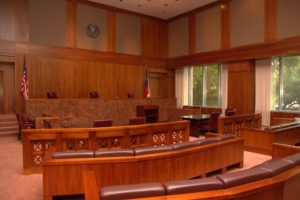Pattern of Misconduct
 In an April 16, 2025 decision, the Supreme Court of Minnesota reviewed the petition of Mr. Selmer for reinstatement to practice law in the State of Minnesota.
In an April 16, 2025 decision, the Supreme Court of Minnesota reviewed the petition of Mr. Selmer for reinstatement to practice law in the State of Minnesota.
Petitioner was admitted to practice law in Wisconsin in 1978 and Minnesota in 1984. Petitioner had a lengthy disciplinary history in both states. In Wisconsin, Petitioner was first disciplined in 1990 for practicing law with a suspended license. In 1995, Petitioner was publicly reprimanded in Minnesota and placed on probation for abusing the discovery process and misusing litigation “to harass his client.” In 1997, Petitioner’s probation was revoked for additional alleged violations, including “asserting frivolous claims of racial discrimination against creditors to avoid paying his debts, knowingly making false and misleading statements to support these claims, and failing to respond to discovery requests.” These violations resulted in a 12-month suspension, and if reinstated, a five (5) year probation.
Petitioner was reinstated after three (3) years, with a five (5) year probation issuing. Prior to the conclusion of Petitioner’s probation, the Director sought to revoke the probation and to impose further discipline. The Director alleged that Petitioner didn’t comply with his probation, failed to file individual tax returns, and was convicted of fifth degree assault. After a disciplinary hearing, the Petitioner was publicly reprimanded and unsupervised probation was continued.
The current indefinite suspension was issued in 2015 without any right to petition for reinstatement for 12 months based upon Petitioner’s conduct in several lawsuits arising from the suspension of operations of an organization where petitioner served as President and CEO. Ultimately, this Court concluded that the Petitioner abused the litigation process and had a pattern of misconduct over several years.
Petitioner sought reinstatement in Minnesota three (3) times, in 2018, 2019, and 2023. The most recent petition is at issue before this Court. Ultimately, the Petitioner argued he had changed, viewing his behavior differently after starting therapy. Additionally, Petitioner asserted that in the past he had blamed the system for his actions, but he now recognized he is responsible for his actions and that his past misconduct had caused harm to himself, his family, the court system, and taxpayers. However, although Petitioner had been reinstated in Wisconsin, the Director in Minnesota alleged he continued to display the same conduct that gave rise to his suspension, failing to respond, failing to communicate, and failing to appear. The Director also provided a screenshot of Petitioner’s professional website that listed a Minnesota address and did not include where he was licensed. Finally, the Director alleged Petitioner failed to satisfy the financial conditions of his reinstatement. The three (3) member panel voted to deny reinstatement, with two opposing reinstatement and one dissenting. It is this decision before the Court.
This Court must consider moral change and competence to practice law to determine reinstatement. The Court may also consider whether the attorney recognized the conduct was wrong, the length of time since the misconduct and suspension, and the seriousness of misconduct. In reviewing whether the Petitioner had undergone moral change, the Court looked to evidence of the conduct up to the time of reinstatement hearing. This Court does not conclude that he met his burden of proving moral change, as he did not sufficiently show “remorse and acceptance of responsibility” for the conduct. Additionally, his recent conduct suggested that his state of mind had not changed from his long history of misconduct. This Court also was not convinced that Petitioner had “demonstrated a renewed commitment to the ethical practice of law” and thus, he has not “proven by clear and convincing evidence that he is competent to practice law.”
The panel’s factual findings were supported by the record and were not erroneous. Petition denied.
